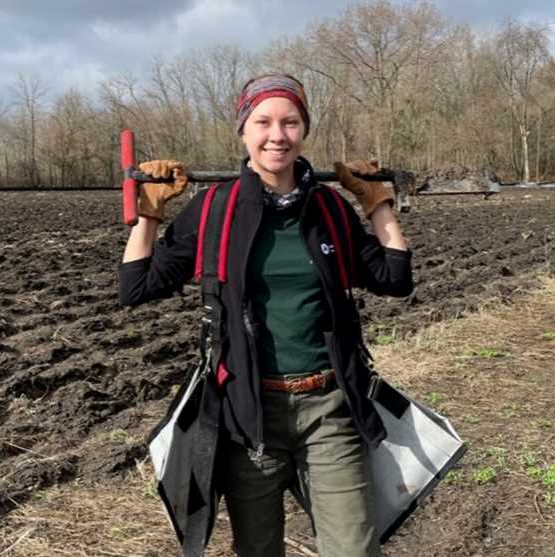
Geoarchaeology program
Undergrad minorThe environment we live in is constantly evolving.
Landscapes we observe today looked different as we journey back in time. We may wonder why did past groups of people choose certain places to live, what did the land look like back then, and what impact did people have on the land and natural resources? The study of geoarchaeology helps us piece together the answers to these questions and more.
UW-La Crosse offers a minor in geoarchaeology, providing students with a multidisciplinary lens to study past environments based on evidence that remains in today’s landscape.
UWL has provided me with the strong foundation in research, planning and knowledge needed to be where I am today.
Taylor Prill

Careers in geoarchaeology
When accompanied by a major in archaeology or geography and environmental science, graduates may find positions in the following.
Positions
- Cultural resource management
- Field archaeologist
- Cultural resource specialist
- GIS technician
- Resource mapper
- Soil scientist
- Environmental planner

What is geoarchaeology?
Geoarchaeology is a field that uses skills and knowledge from physical geography to answer archaeological questions. With a minor in geoarchaeology, you will begin to understand clues in the natural landscape that can lead to new discoveries about the environment people lived in long ago. A geoarchaeologist not only has a good foundation in archaeology, but also an understanding of how to apply methods of landscape evolution and an understanding of environmental change.
What distinguishes UWL's geoarchaeology program?
Classes in the minor include a broad selection of courses from different UWL colleges in areas of geography and archaeology giving students a more holistic view as they approach future careers.
Students will have access to field mapping technology, geophysical equipment, soil sampling and analysis tools, lab spaces and more.
Aside from four key foundational courses, students in the minor can choose from a wide variety of elective courses to fulfill the minor requirements.
Many of the courses involve lab components and field experiences. Several hands-on courses offer students experiences with mapping equipment whether flying drones and developing 3D models or using ground penetrating radar to interpret various layers of soil.
UWL’s campus is located within a mile of towering sandstone bluffs, a 900-acre urban wetland, and the Mississippi River, all accessible through miles of hiking and biking trails. Students regularly explore the La Crosse area’s urban and natural landscape through coursework, field trips and research projects.






